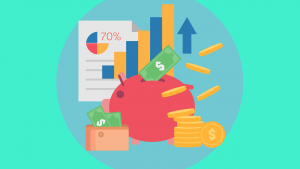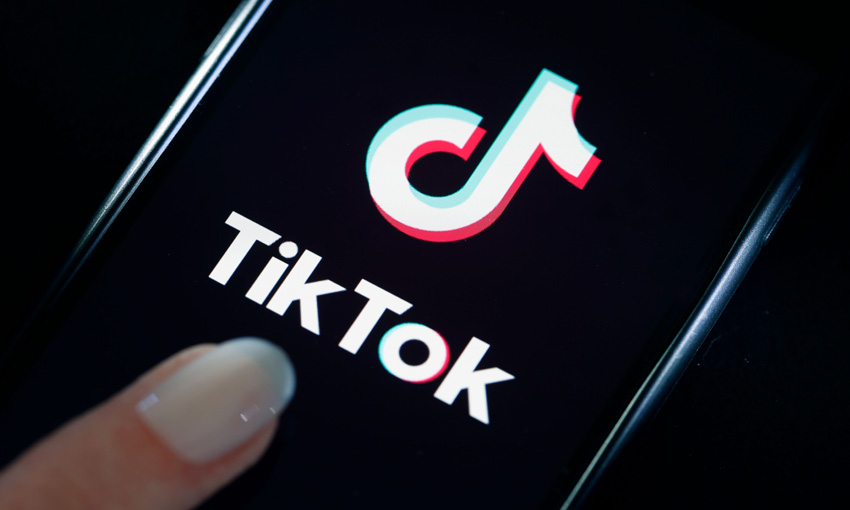Disclosure: Privacy Australia is community-supported. We may earn a commission when you buy a VPN through one of our links. Learn more.
How to Invest in Commodities in Australia
When it comes to investing, stocks are stable, to a degree. You have tons of information to work with to determine the value of a stock. And along with stocks, you have the securities related to a stock; CFDs, options, futures, and even binary options if you want to really stretch the meaning of the word “related”.
If you want to get riskier, there is foreign currency. People have made and lost fortunes on foreign currency. But how stable are commodities? One would expect them to be on the more stable side of things. And indeed, they certainly tend to have a positive place in the market.
Buying commodities is a great way to invest because with most commodities you can be sure that people will need them eventually. Iron, copper, and tin, are all materials that are in massive demand. This means taking control of their supply can be very lucrative.
But while their general value is stable, their specific value is anything but. The funny thing about commodities is that they are almost always over-extracted. Everyone needs iron and copper, but only so much iron and copper can be used at any time. And companies always extract far more than they need.
That means investing in commodities is a matter of investing in the right commodity, in the right way, at the right time. So, how do you do all that? Well, to begin with, let’s talk about the different types of commodities just so we have a clearer idea of what exactly you are trading in.
Table of Contents:
What are Commodities? ➡️
A commodity is a raw material used in the creation of products. A gold ring is a product. But the gold ore that has to be refined into the gold that has to be shaped into the ring? That is a commodity.
One could argue that the pure gold that is shaped into the ring is also a commodity. In fact, if you buy gold rings in bulk from the manufacturer, then that is a commodity too. This is because a commodity is really just something that you trade in a certain form, as a security, not from a storefront.
As a security, it has certain rules. Even if you buy a commodity of 100 gold rings, unlike buying those gold rings from a jeweller, you are not buying any particular gold rings. You are buying a claim to 100 gold rings from a dealer to be produced on demand.
The most common commodities to trade are crude oil followed by coffee. Coffee is such a big trade that it is separate from agricultural yields, as coffee alone is traded more than corn, rice, and wheat combined. In short, almost everything people use to live their lives can be commodified.
If you want to figure out what makes an industry tick, consider its commodities. Think about what it takes to make its products. Most electronics require a copper wire, for example, due to copper’s high conductivity and plentiful presence in the earth’s crust.
That means if Apple is on the verge of releasing a new iPhone (which they do at regular intervals), you can easily anticipate an increase in copper demand.
How do you Invest in Commodities? 💰️

What makes commodities really interesting is not the “what” but the “how”. Besides purchasing the commodity itself, you can also purchase a “future” of the commodity. A “future” is just about what it sounds like: You are purchasing a commodity that will come into existence in the future.
But how can that be? Well, not all the copper has been mined from the earth. But we can be sure that we will need more copper in the future. So, a copper future is a security that says you will own copper at a certain date, once it has been mined. But that copper has not yet been mined, so it does not exist.
This is actually more common than physical commodities trading, especially in Australia where you can only get those commodities from special brokers or corporations. This makes it hard to trade, as they usually have to undergo special legal channels to be transferred to an online trading platform.
How to Trade in Futures
Let’s focus on futures for now. So, a future is a commodity that does not exist yet but will eventually. What is the value in that? Why is that even a thing anyone is interested in trading?
Simply put, it is one of the many avenues in the marketplace where risk is sought-after. This surprises many people. Why would anyone deliberately seek out risk? Doesn’t risk losing your money?
Well, most of the time. But consider this: When you buy a future, you are basically purchasing a commodity at a discount. That discount comes from the risk. What if the demand for that commodity goes down between now and then? What if they fail to extract it at all?
All kinds of things can go wrong with a future. But the people who sell futures still need the money from futures. So, they are willing to sell them at a discount. Once the commodity actually comes into existence, it will be more valuable than the price you paid for it.
That means you can sell it at a profit. In fact, you can sell it back to the person or group from whom you bought the future in the first place. After all, they now have a product they can sell to a customer. The money from the customer can cover the cost of the future, and then some. Everyone wins.
Of course, it can go the other way too. Evaluating that is the essence of the future. In the stock market, there is a strong (though not direct) correlation between risk and reward. And futures can be a great lottery ticket for some people, and a steady income for others.
How to Trade Commodity CFDs

CFDs are the bad boy of the stock market. Futures might seem risky, but CFDs are notorious for losing new investors money. They are much riskier.
They are also both complicated and given to fraud, both of which contribute heavily to all the new investors losing money on them. So, let’s go over how they work in detail to avoid that confusion.
CFD is an acronym for “contract for differences”. The idea is that you buy the contract, making you the “buyer”, from a “seller”. The buyer and the seller agree on a few things. The most important thing is the price of the “underlying asset” (in this case a commodity) at the time the contract was made.
This price is called the “opening price”. The contract will also layout a date, at which point the buyer and seller will observe the “closing price”. If the closing price is higher than the opening price, then the seller has to pay the buyer the difference. If it goes the opposite way, the buyer has to pay the seller.
If you look closely, you will notice that no one is actually buying a commodity here. This is part of what makes CFDs so compelling: While commodities and their futures are finite, CFDs are not. That means both gains and losses are theoretically infinite. You can lose as much money as you can stomach.
You can also probably see where the potential for manipulation comes from. Someone can cold call you telling you about this contract, completely misrepresent it, and convince you to sign on the dotted line. Many scams exist like this that basically make unsuspecting consumers into the “sellers” that have to then pay the “buyers” that contacted them. This is illegal, but hard to prove and prosecute.
It also means that someone with insider information can use CFDs to place orders that are essentially risk-free. And make no mistake, without the trade of the underlying asset, it is just money and probability. But for most people, money is money, whether it is a CFD of a commodity or a stock.
Where to Trade Commodities 📊️

So, we have gone over the commodities themselves, the much more common futures, and the much more risky CFDs. But where do you find all of this stuff? You can’t just get it at a gas station.
The answer to that is simple: Trading platforms. Even the most obscure securities can be found if only you have the right trading platform. Here is where the rubber meets the road, where your understanding of these securities can really make you money. Therefore, the process is crucial.
Luckily, the process is also simple. Let’s go step by step and talk about how to invest in commodities using a trading platform.
Step One: Getting an Account
Shockingly, this step is not as simple as some of the others. It makes sense, as you are not just clicking “sign up with Facebook” like you would with most other accounts on the internet. Here, you have to enter personal identity information and banking information in order to have an account.
Well, strictly speaking, entering the banking information is not required to make the account. Depending on the platform, it might not even be required for the purchasing of commodities, futures, or CFDs. But to begin with, it probably should be required, and it will be required for you to transfer money out.
Step Two: Buying the Securities Themselves
Whether you buy commodities, futures, or CFDs is mostly up to the trading platform, as not all trading platforms serve the same interests. Most trading platforms do, however, have relatively similar interfaces. Research the commodities market beforehand and start by finding what you want to trade.
Then, once you have that in mind, search it out on the trading platform. They will usually give you a graph showing the price history of the security, and sometimes even tools for examining that price history more closely. Use those if you want, but what you are really looking for is a “Buy” button.
One unique thing about commodities is that, unlike stocks, you cannot buy fractional shares of them. That means you are either all in, or all out. So, spend your money carefully.
Step Three: Making Your Money
Ordinarily, this step would be called “selling your commodities” or “selling your futures”. But it is a little more complicated than that due to the fact that futures can become commodities, and CFDs do not even get sold. The short version is, that once you have your securities, you have to make them into money.
With commodities, it is much like manoeuvring stocks. You buy low, you sell high. How do you know when a commodity is “low” and how do you know when it will go high? That is such a deep topic that we can’t really get into it right now. But there is research on the trading platforms examining that.
Futures are either sold as they get nearer to their “due date” when their underlying commodity comes into existence. Ideally, they will increase in value nearer that time, but they can decrease if demand goes lower, or supply means the future might not be fulfilled.
Your money will first go to your brokerage account. Then, you have to transfer it to your actual bank account where you can spend it.
Conclusion 💡️
And with that, you have invested in commodities. The way you do this is totally up to you. You can buy commodities and hold them for as long as you want. Futures and CFDs have time limits, but that just means that the real question is what you do with the money you make off of them.
Just remember to be careful. Commodities are a tricky business, and nowhere near as certain as they appear to be. Invest carefully, take what little gains you can get, and you will make money in the fullness of time. Try not to lose all your money chasing a non-existent lottery ticket.
You Might Also Like:






